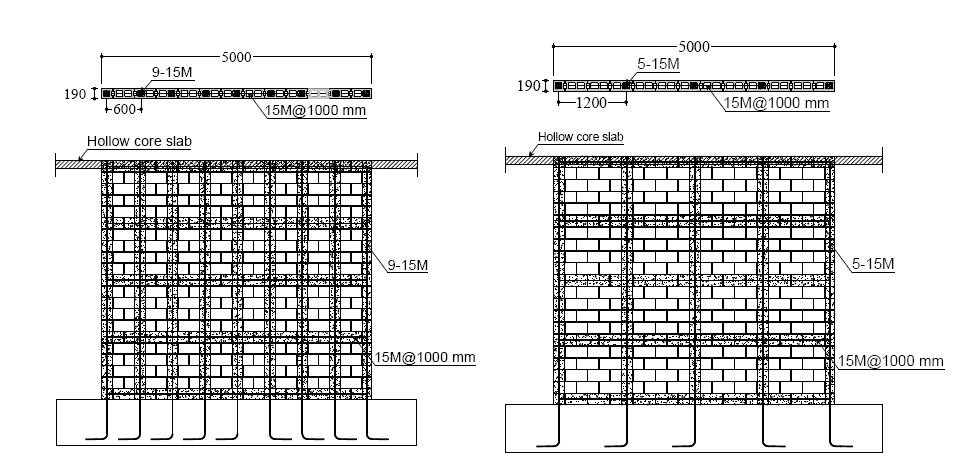Omar Elmeligy, Nader Aly and Khaled Galal
Omar Elmeligy, PhD Student, Department of Building, Civil and Environmental Engineering, Concordia University, 1515 St. Catherine West, Montreal, QC, Canada. On leave, Assistant Lecturer, Dept. of Civil Engineering, the British University in Egypt, El-Sherouk City, Suez Desert Rd., P.O. Box 43, Cairo 11837, Egypt, omar.elmeligy@concordia.ca
Nader Aly, Owner’s Engineering Lead, Bruce Power, ON, Canada. Formerly, Postdoctoral Fellow, Department of Building, Civil and Environmental Engineering, Concordia University, 1515 St. Catherine West, Montreal, QC, Canada, nader.essam.aly@gmail.com
Khaled Galal, Professor, Department of Building, Civil and Environmental Engineering, Concordia University, 1515 St. Catherine West, Montreal, QC, Canada, khaled.galal@concordia.ca
ABSTRACT
A simplified finite element model is proposed using VecTor2 software to simulate the cyclic behavior of partially grouted reinforced masonry shear walls constructed with concrete-masonry
blocks and having reinforced bond beams. Following the development of the validated model, a sensitivity analysis is conducted to study the relative effect of different grouted and ungrouted masonry modeling input parameters on the seismic response of the modeled walls. In this regard, four reference walls with different aspect ratios (1.0 and 2.0) and different vertical reinforcement spacings (600 mm and 1200 mm) are modeled. Afterwards, reference values of masonry modeling input parameters are changed within ±30% from the reference values. It is concluded that the
parameters of the ungrouted masonry are the most influential ones, where the walls’ behavior is mostly sensitive to the input value of the angle of internal friction between blocks and mortar.
However, this effect diminishes as the aspect ratio of the wall increases and spacing between grouted cells decreases. Accordingly, for shorter walls and walls with larger spacing between
grouted cells, more attention shall be given to the estimation of the parameters representing the material properties of ungrouted masonry, especially the angle of internal friction. This also concludes that better seismic response of PG-RMSWs can be achieved by increasing the friction between the mortar and blocks in the ungrouted portions of the walls.
KEYWORDS: partially grouted, reinforced masonry, cyclic loading, simplified micro modeling, sensitivity analysis, tornado diagrams



